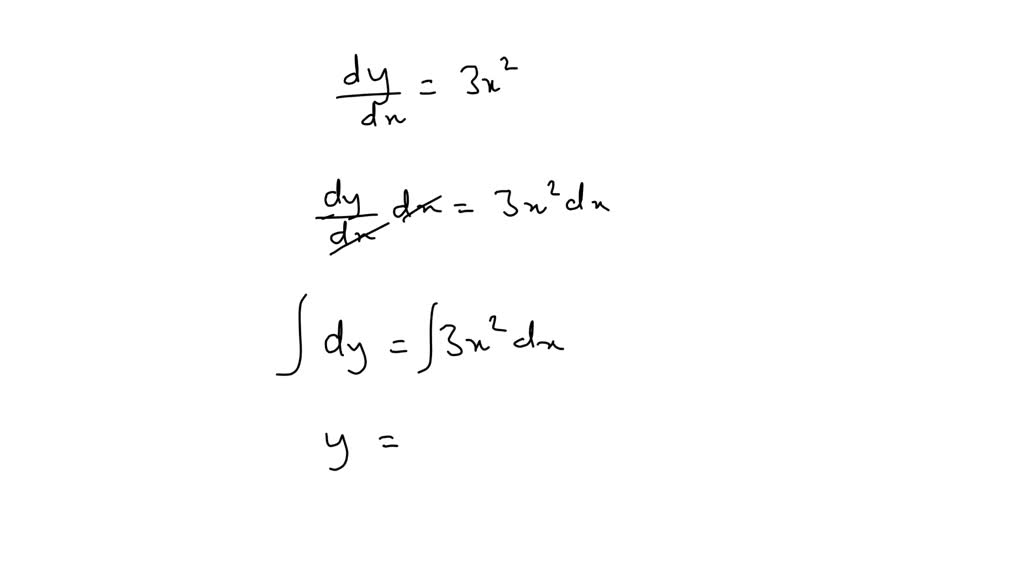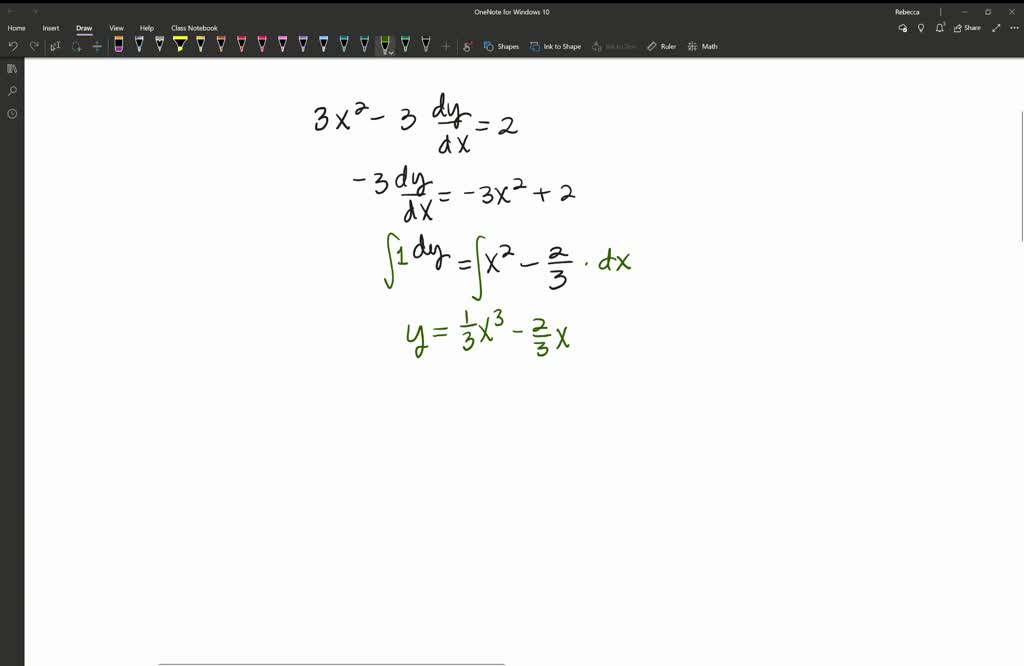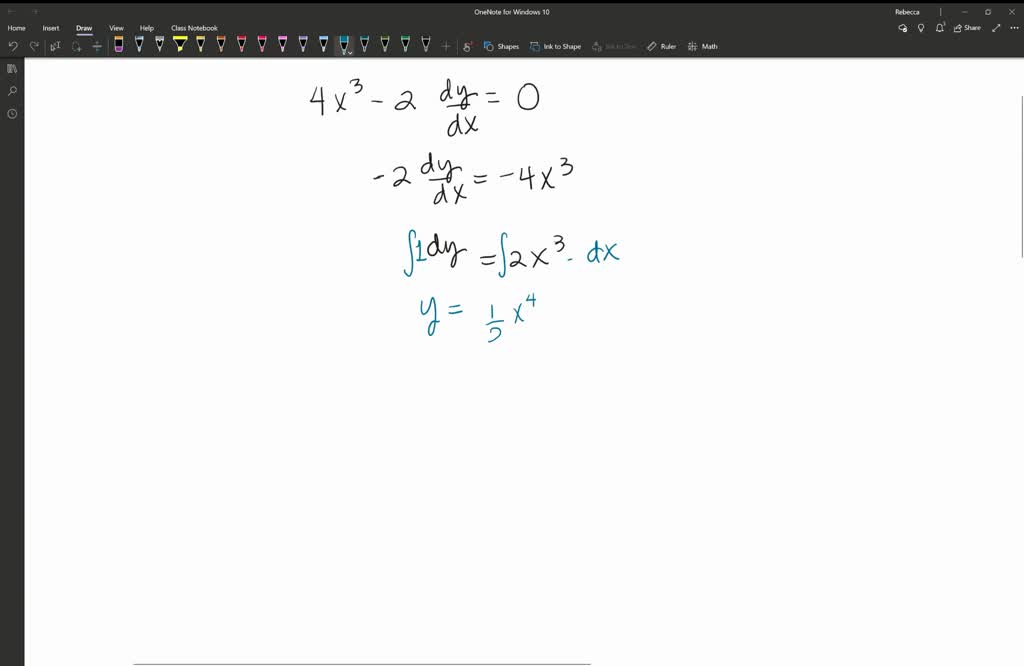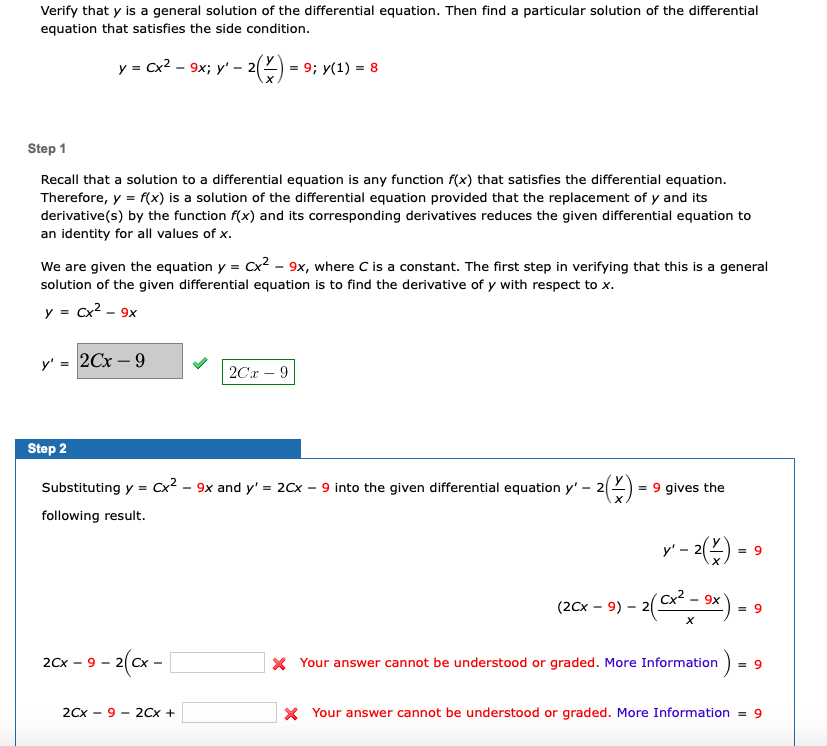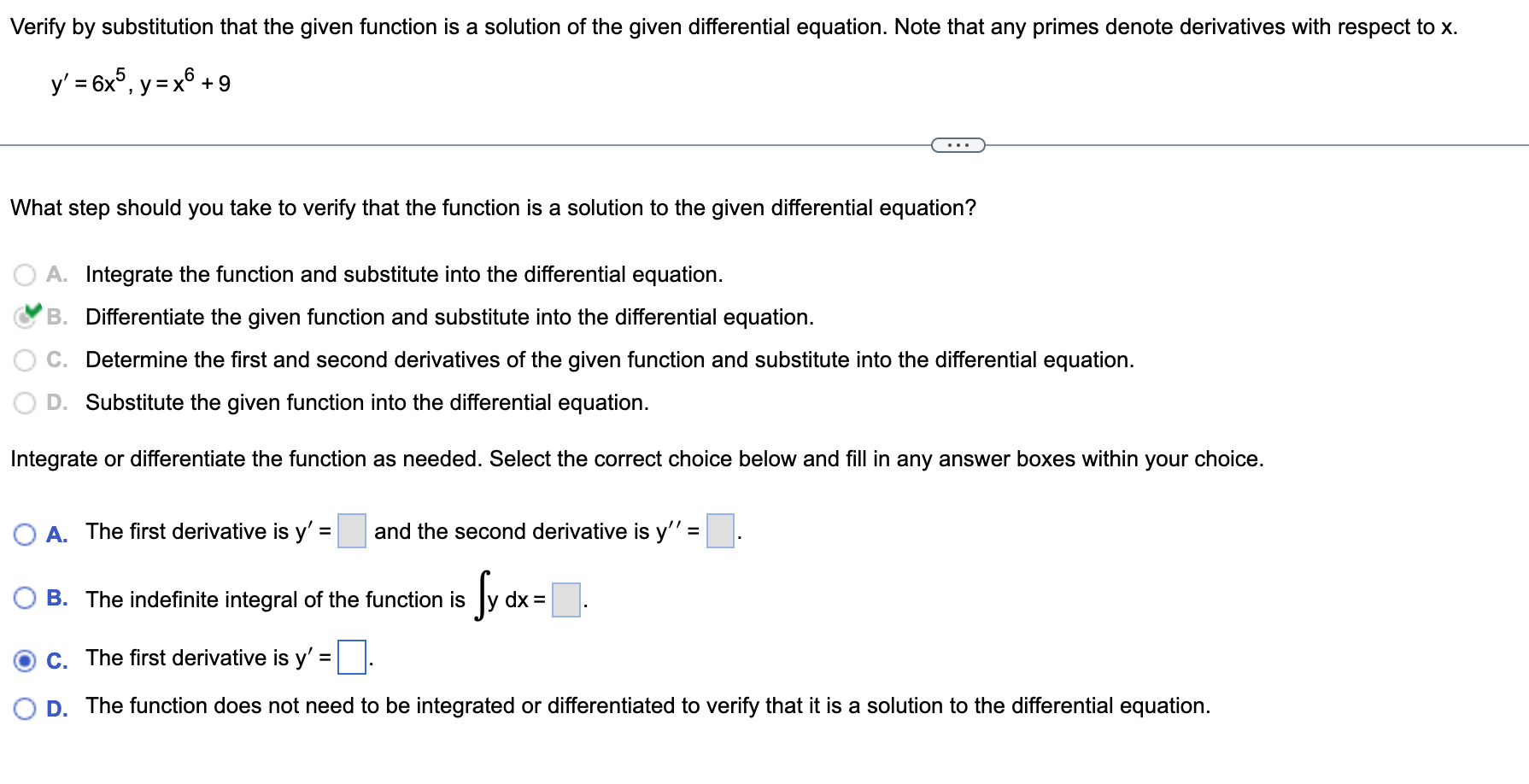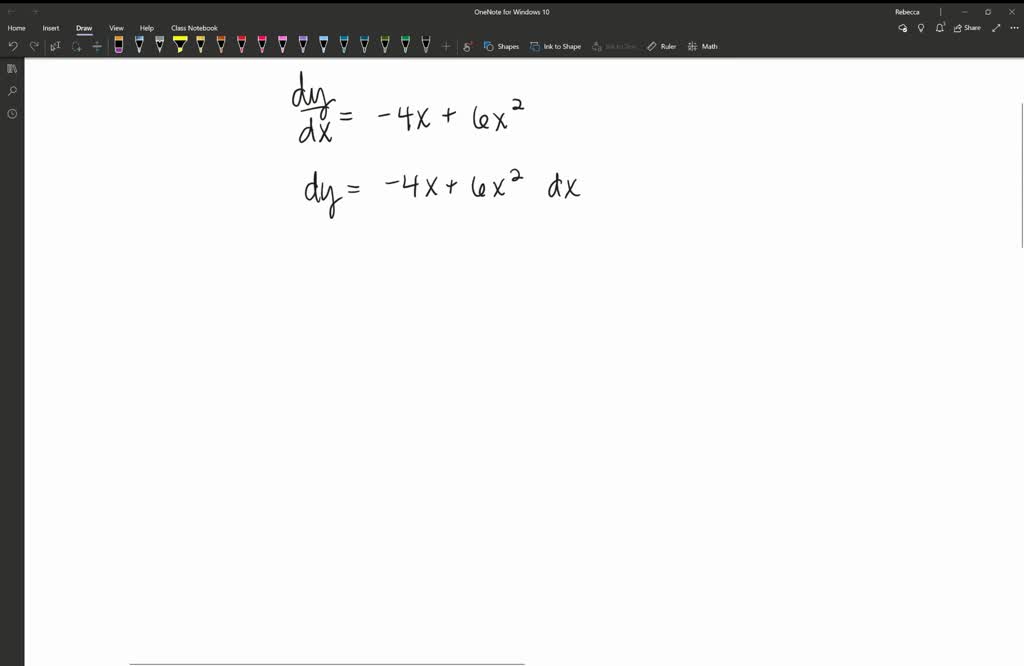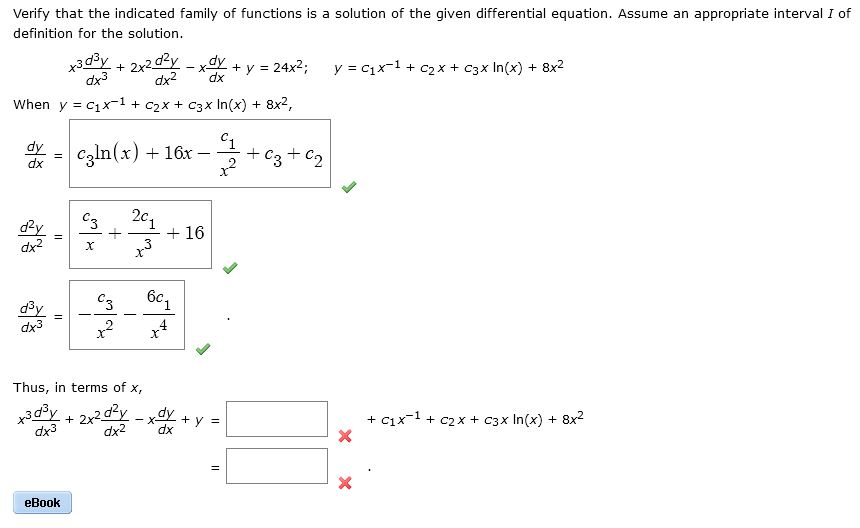Verify The Solution Of The Differential Equation - Substitute into the given differential equation. When n = 0 the equation can be solved as a first order linear differential equation. When n = 1 the equation can be solved using separation of. Cancel the common factor of x3 x 3 and x x. In this section we concentrate on analytic solutions to. Verify whether a given function does or does not satisfy an initial condition. Differential equations verifying the solution of a differential equation i have found that a lot of students get intimidated by the language of.
Cancel the common factor of x3 x 3 and x x. When n = 1 the equation can be solved using separation of. Differential equations verifying the solution of a differential equation i have found that a lot of students get intimidated by the language of. Substitute into the given differential equation. When n = 0 the equation can be solved as a first order linear differential equation. In this section we concentrate on analytic solutions to. Verify whether a given function does or does not satisfy an initial condition.
When n = 0 the equation can be solved as a first order linear differential equation. Substitute into the given differential equation. When n = 1 the equation can be solved using separation of. Verify whether a given function does or does not satisfy an initial condition. In this section we concentrate on analytic solutions to. Cancel the common factor of x3 x 3 and x x. Differential equations verifying the solution of a differential equation i have found that a lot of students get intimidated by the language of.
Verify by substitution that each given function is a solution of the
When n = 1 the equation can be solved using separation of. In this section we concentrate on analytic solutions to. Cancel the common factor of x3 x 3 and x x. When n = 0 the equation can be solved as a first order linear differential equation. Substitute into the given differential equation.
SOLVEDFind the general solution for each differential equation. Verify
When n = 1 the equation can be solved using separation of. Cancel the common factor of x3 x 3 and x x. Substitute into the given differential equation. In this section we concentrate on analytic solutions to. When n = 0 the equation can be solved as a first order linear differential equation.
SOLVEDFind the general solution for each differential equation. Verify
Differential equations verifying the solution of a differential equation i have found that a lot of students get intimidated by the language of. Substitute into the given differential equation. Verify whether a given function does or does not satisfy an initial condition. Cancel the common factor of x3 x 3 and x x. When n = 0 the equation can.
Solved For each differential equation, verify by
When n = 0 the equation can be solved as a first order linear differential equation. Cancel the common factor of x3 x 3 and x x. When n = 1 the equation can be solved using separation of. Substitute into the given differential equation. Differential equations verifying the solution of a differential equation i have found that a lot.
Solved Verify that y is a general solution of the
When n = 1 the equation can be solved using separation of. Differential equations verifying the solution of a differential equation i have found that a lot of students get intimidated by the language of. In this section we concentrate on analytic solutions to. Cancel the common factor of x3 x 3 and x x. Verify whether a given function.
Solved Verify by substitution that the given function is a
Cancel the common factor of x3 x 3 and x x. In this section we concentrate on analytic solutions to. When n = 0 the equation can be solved as a first order linear differential equation. Verify whether a given function does or does not satisfy an initial condition. Differential equations verifying the solution of a differential equation i have.
SOLVEDFind the general solution for each differential equation. Verify
Verify whether a given function does or does not satisfy an initial condition. Substitute into the given differential equation. In this section we concentrate on analytic solutions to. When n = 1 the equation can be solved using separation of. Cancel the common factor of x3 x 3 and x x.
Solved Verify that the indicated function is an explicit
Cancel the common factor of x3 x 3 and x x. Substitute into the given differential equation. Differential equations verifying the solution of a differential equation i have found that a lot of students get intimidated by the language of. When n = 0 the equation can be solved as a first order linear differential equation. Verify whether a given.
Solved Verify that the indicated family of functions is a
Differential equations verifying the solution of a differential equation i have found that a lot of students get intimidated by the language of. Verify whether a given function does or does not satisfy an initial condition. In this section we concentrate on analytic solutions to. When n = 0 the equation can be solved as a first order linear differential.
Solved Verify that each given function is a solution of the
Differential equations verifying the solution of a differential equation i have found that a lot of students get intimidated by the language of. Verify whether a given function does or does not satisfy an initial condition. Cancel the common factor of x3 x 3 and x x. Substitute into the given differential equation. When n = 1 the equation can.
Cancel The Common Factor Of X3 X 3 And X X.
Substitute into the given differential equation. When n = 1 the equation can be solved using separation of. Differential equations verifying the solution of a differential equation i have found that a lot of students get intimidated by the language of. When n = 0 the equation can be solved as a first order linear differential equation.
In This Section We Concentrate On Analytic Solutions To.
Verify whether a given function does or does not satisfy an initial condition.
